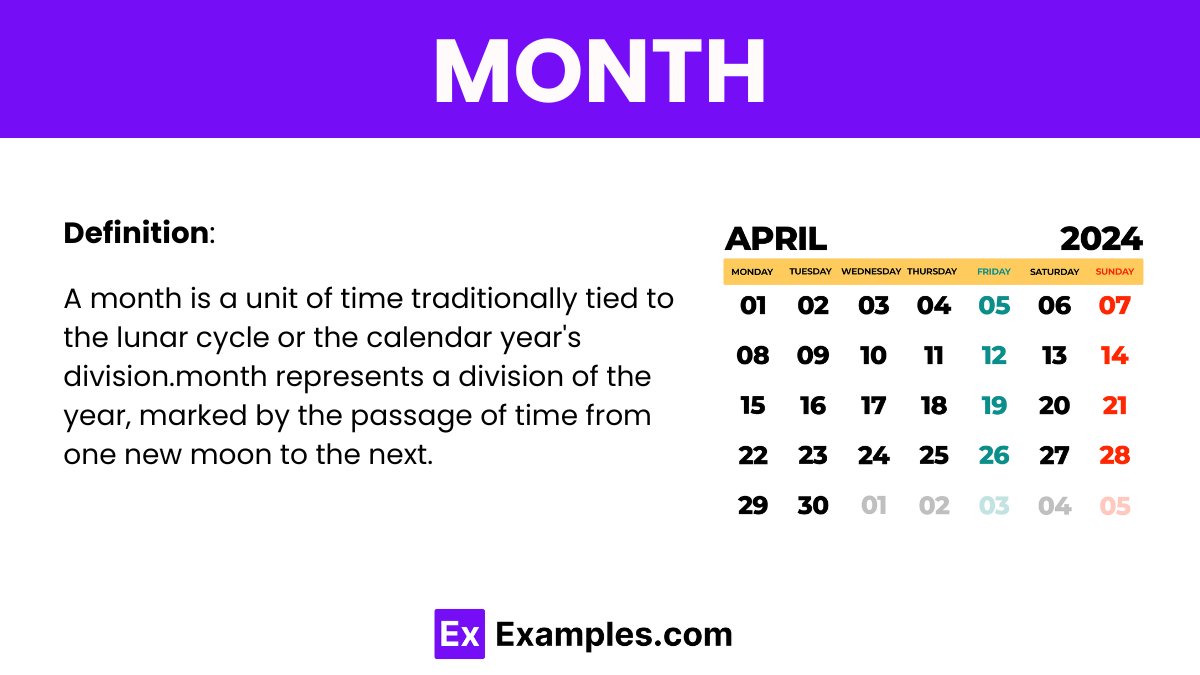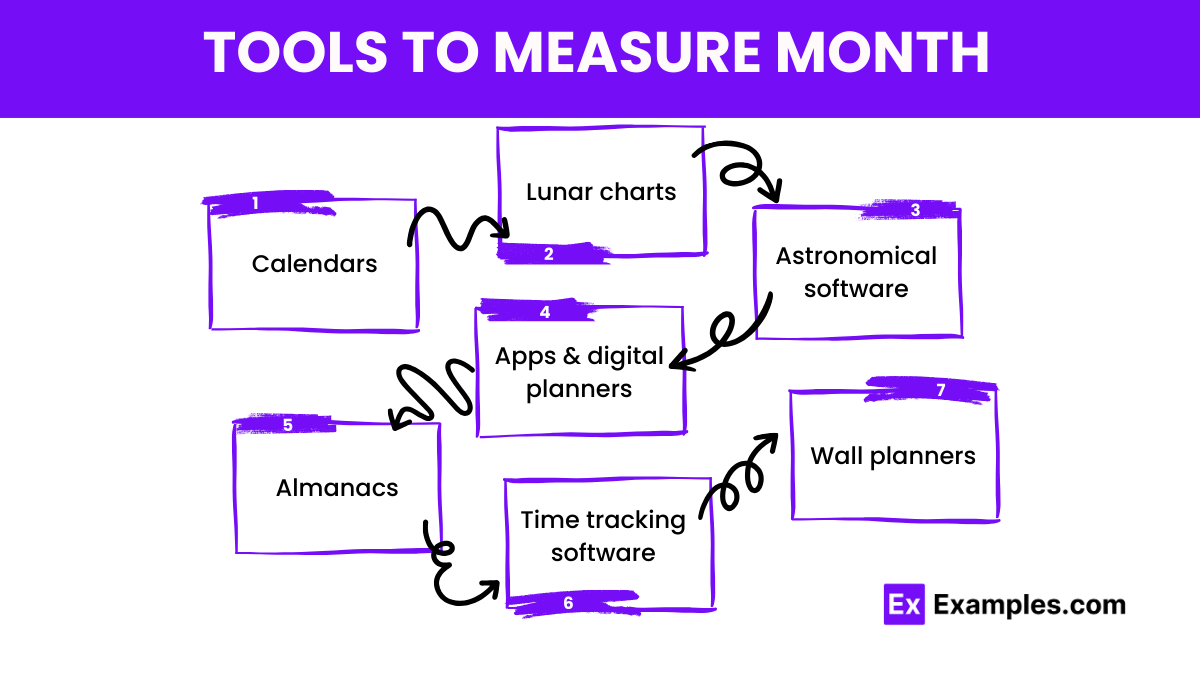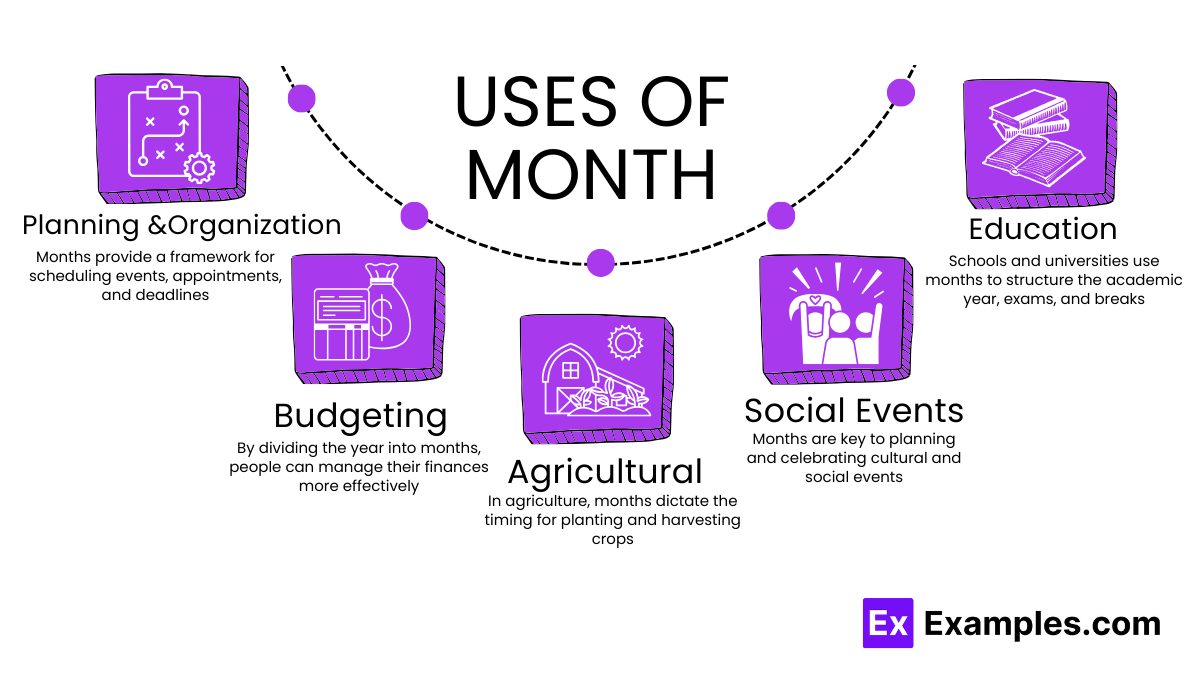How many days are there in February during a leap year?
28
29
30
31


A month is a unit of time traditionally tied to the lunar cycle or the calendar year’s division. Generally, it spans from 28 to 31 days. Across cultures and history, months have organized agricultural, social, and administrative activities, aligning closely with the natural world’s cycles. This division helps in planning and tracking seasonal events effectively, providing a structured approach to time management throughout the year.
It is crucial in the organization of our calendar, facilitating a structured approach to tracking days, weeks, and important events. Initially rooted in lunar cycles, modern months vary from 28 to 31 days, adapting to the solar year as used in the Gregorian calendar. As we progress through the year, each month helps us manage seasonal activities and cultural celebrations effectively. This division not only aids in administrative planning but also enriches our cultural and social life by marking periods of special significance and festivities.

| Month | Number of Days |
|---|---|
| January | 31 days |
| February | 28 or 29 days |
| March | 31 days |
| April | 30 days |
| May | 31 days |
| June | 30 days |
| July | 31 days |
| August | 31 days |
| September | 30 days |
| October | 31 days |
| November | 30 days |
| December | 31 days |
A month serves as a crucial time frame for organizing and planning our daily lives. It helps break the year into manageable parts, making long-term planning more accessible. Additionally, months are vital for financial management, allowing for monthly budgeting and expense tracking.
Moreover, each month influences various cultural, social, and religious celebrations. For example, December brings festivities like Christmas, and February often involves preparing for Valentine’s Day and observing Black History Month in the United States.
Furthermore, months are essential for agricultural activities, dictating planting and harvesting times based on seasonal changes. They also play a significant role in the academic calendar, guiding the scheduling of school terms and vacations.
In summary, months structure our time, support cultural rituals, guide financial and agricultural planning, and shape educational schedules, profoundly impacting our efficiency and how we experience the year.

Fill in the Blanks: Examples for Month
Answers:
While four weeks technically make up 28 days, most months in the Gregorian calendar, except February, contain more than 28 days, ranging from 30 to 31 days.
A month can vary in length; February typically has 28 days, while other months range from 30 to 31 days, depending on their position in the Gregorian calendar.
February is short because the Roman calendar was realigned with the solar year, leaving February with fewer days to fit a 365-day year within 12 months.
Text prompt
Add Tone
10 Examples of Public speaking
20 Examples of Gas lighting
How many days are there in February during a leap year?
28
29
30
31
Which month has the shortest number of days in a non-leap year?
January
February
April
June
How many months have exactly 30 days?
4
5
6
7
In which month does the winter solstice typically occur in the Northern Hemisphere?
December
January
February
March
Which month marks the beginning of spring in the Northern Hemisphere?
May
April
March
June
Which month has 31 days and is also known for the holiday Halloween?
September
October
November
December
Which of the following months has 31 days and is named after a Roman emperor?
July
August
September
October
What is the only month with the letter 'R' in its name?
March
July
May
September
Which month is the middle month of the year?
July
June
August
May
Which month comes immediately after July?
June
August
September
May
Before you leave, take our quick quiz to enhance your learning!

